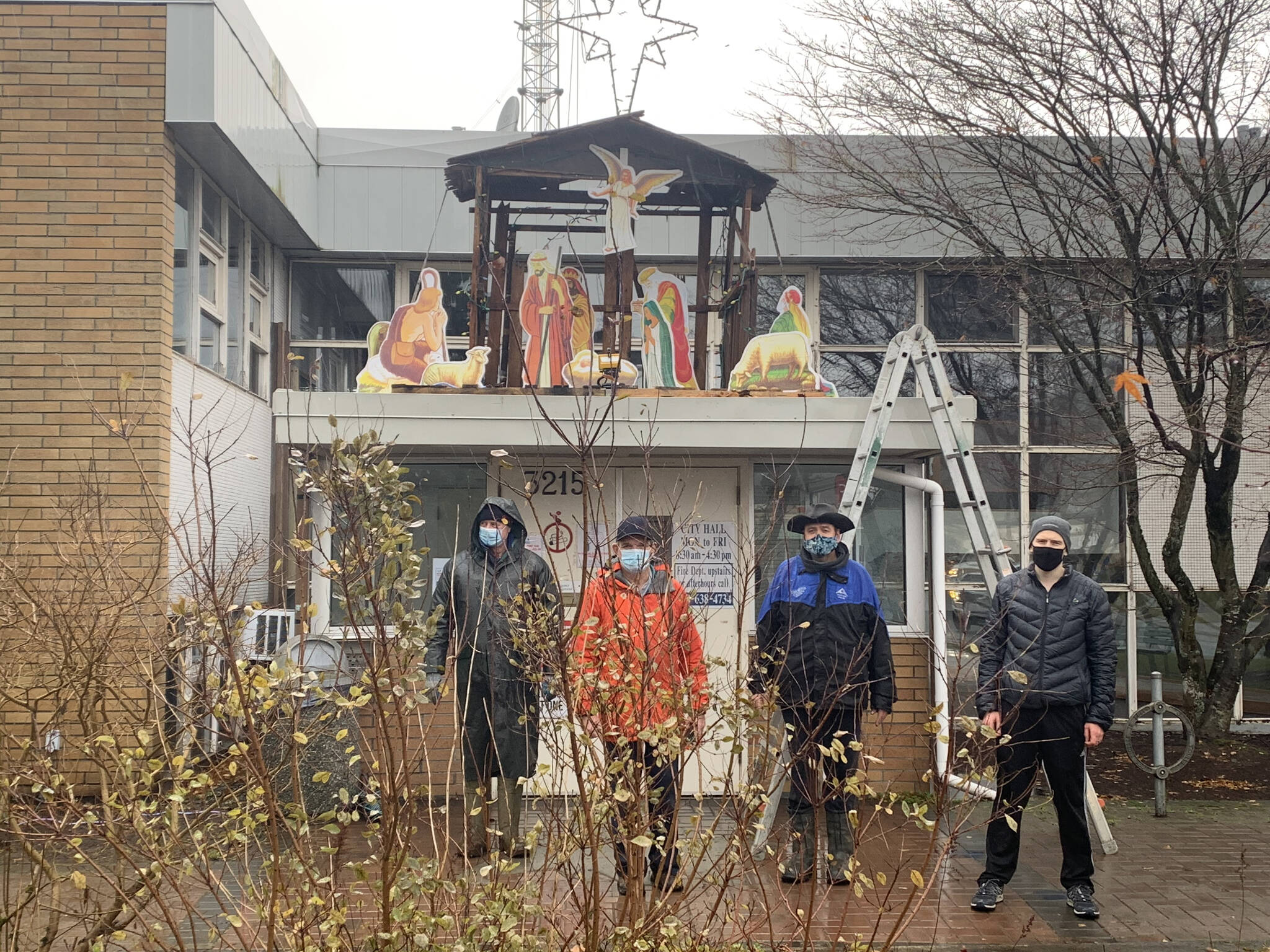The City of Terrace is banning the placing of a nativity scene on top of the covered entrance to city hall this holiday season, ending a decades-old Christmas observance.
The nativity scene belongs to the Knights of Columbus, a Catholic men’s charitable group, and is usually put up in early December.
The city is invoking a Supreme Court of Canada decision arising from a 2007 complaint filed against the City of Saguenay, Quebec for its council’s practice of holding a prayer prior to each meeting.
That complaint by atheist Alain Simoneau was upheld by the Quebec Human Rights Tribunal but then rejected by the Quebec Court of Appeal, whereupon Simoneau took his case to the Supreme Court.
The Supreme Court backed up the decision of the Quebec Human Rights Tribunal in a 2015 unanimous ruling, finding that “the prayer was, when considered in light of its context, religious in nature and that the city and its mayor, by having it recited, were showing a preference for one religion to the detriment of others, which constituted a breach of the state’s duty of neutrality.”
City of Terrace spokesperson Tyler Clarke, who provided a summary of the Saguenay decision, said all the city was doing was following the Supreme Court of Canada decision.
“The need to separate religion and government has been the subject of numerous court decisions in Canada,” he said.
“The decision was made by the Supreme Court of Canada, it wasn’t made by any single individual with the city. We’re simply following what the laws tell us.”
There was no immediate response as to why the city waited seven years since the 2015 court decision to ban the nativity scene and Clarke acknowledged there had been no complaints or challenges made to the city.
He indicated that the previous city council whose term ended this month was not involved in the matter and that it fell to city administrators.
Legal experts have, however, pointed out that the Supreme Court’s Saguenay ruling relates only to the practice of prayer, not to symbols that might be regarded as religious in nature.
Simoneau, who filed the original complaint, had also wanted symbols removed but the original Quebec Human Rights Tribunal decision focused only on prayer.
Terrace did, however, respond favourably to a request from the B.C. Humanist Association to stop holding a prayer at the inaugural meeting of a newly-elected council.
The practice was stopped when the council for the next four years was sworn in Nov. 7.
Last month the association, which states, on its website, “you can be good without god” told 23 B.C. municipalities who held prayers at 2018 inaugural meetings that they should follow the Saguenay decision.
Terrace was one of those 23 municipalities and among the 21 who told the association this year they would not hold a prayer at their 2022 inaugural meeting.
Clarke said that decision, as with the nativity scene, was made without council involvement.
In 2019 Quebec took its notions of religious neutrality a step further by passing Bill 21 that bans civil servants in ‘positions of authority’ from wearing religious symbols like hijabs, crucifixes or turbans while at work.

